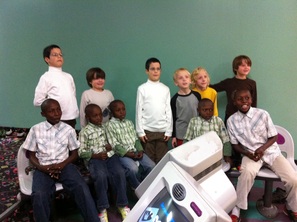
 How many multiples do you see? If you said 11 (5 sets), you're right! For the full story on 4 sets of twins and 1 set of triplets celebrating a first birthday, check out this link!
0 Comments
One thing I found particularly challenging as I worked through progress reports this weekend was arriving at a "mark" that accurately reflects student progress in the six different learning skills on page one of the report. Organization, Independent Work, Collaboration, Responsibility, Initiative and Self-Regulation all have to be judged as "N-needs improvement", "S-satisfactory", "G-good" or "E-excellent" for every student. At only 7 weeks into the school year...???!!! One thing some of my colleagues and I have been working on is making the descriptors from the report card more "student friendly", in terms of language, in order that we might communicate the look-fors more effectively to students. Below are two examples, Independent Work and Collaboration, which we use with students as we are developing criteria by which they can self-assess. These criteria are posted in the room and referred to throughout the year. They also form the basis for a Learning Skill-specific activity we complete together as we discuss each Skill. As we work with students throughout each day, many behaviours are observed that form the basis for anecdotal records. But where to record these? Until now, I have used a variety of recording locations and tools. Working on progress reports this past weekend reminded me of the importance of having notes in one place, linked specifically to the learning skills as a whole, since we report on them as a group. One of my colleagues sent me a draft of a template he had been working on, with multiple LS on one page. This inspired me to create my own tool for use with LS. Below is a tracking sheet I am going to try out for Term One reports. The descriptors are copied almost verbatim from the report card, with some fine-tuning (so they make more sense "at a glance"!) As I move about my classroom taking note of the things students say or do that may link to a specific learning skill, I can jot these down in my binder, or even on a sticky note which I can then transfer to the appropriate spot on the record sheet. Later, the anecdotals can be used to construct comments for the report card. I am hopeful that this organizational tool will make accurate, descriptive comments more effective and efficent come January! 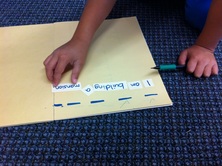 A friend asked me the other day if I really believed that all students could learn. It’s true that many of our students face seemingly insurmountable challenges: Nutritional issues, sleep deprivation, limited extra-curricular experience to supplement schema and help make connections to various classroom texts and tasks… and all that in addition to varying degrees and kind of “natural” intelligence. But if one believes in the infinite capacity of the human spirit, as I do, and if one has read the research on brain plasticity, one cannot help but commit fully to moving each student in ones care forward along his/her individual learning continuum. I *do* believe that – with the right scaffolds and instructional experiences (and this includes enthusiasm and optimism of the teacher!!) -- all students can learn. One big hurdle many students in our school face is that the language of instruction, English, is not their first language. And although the research on transfer of literacy across languages is very positive, some of our students – due to various complicating factors –have not had the opportunity to develop literacy in their first language, so that in addition to learning to read, write, speak and understand in a new language (English), they are learning to think critically, period. In some cases, students arrive on our doorstep never having been to school, ever! And we suddenly expect them to think deeply about a text they have read, infer, visualise and make connections, when in actuality, they have never even sat behind a desk in a room with 20 other children before!!! Obviously, the ramifications of such a situation are significant. One incredible strategy that a former colleague and mentor shared with me is “Language Experience”, a very specific and structured instructional activity that allows students to “experience” language in a low-stress, engaging manner. The activity, a modified version of which is recognizable from “Reading Recovery” work, first requires a very small group of students (or in some cases even just one student) to be guided by a teacher through a shared experience, rich in oral language immersion. This experience could be as “big” as a trip to the local grocery store, or as simple as a shared game of toy cars on a track in the classroom. The idea is to immerse the student(s) in as much relevant and contextual language as possible, as this "experience" will later form the basis for writing a “story” (sentence). Once the experience is “complete”, students gather at a table or other workspace, and talk with the teacher/leader about their experience. Each student then crafts a sentence (e.g. “We went to the store and bought some fruit.”), which the teacher scribes in marker on a strip of paper or cardstock. The paper sentence is then cut apart and rearranged five times by the student, who reads his/her sentence with increasing fluency each time. Finally, the sentence is glued onto the page, and copied by the student in the space below.
The student has now interacted verbally and emotionally with other English speakers, has constructed a cohesive sentence, has re-constructed the sentence multiple times (thinking about structure and form each time), has read the sentence several times, and has written the sentence. The pattern is locked into the student’s mind. If they “went to the store and bought some fruit” this time, perhaps next time they will “go to the gym and play a game”, or “go to the library and find a book”. Each experience brings a slew of new vocabulary with it, but the familiarity of the structure provides the scaffolding necessary for success. My former colleague has many hundreds of stories about students of all ages who underwent language experiences with her, and who – once the scaffolding was eventually removed – were able to read and write quite confidently and successfully in English. My own journey this year begins with a small group of grade threes, one of whom has been in Canada -- and school -- for less than a year. Yesterday, we built a mansion in my classroom. Tomorrow, we take on the world! 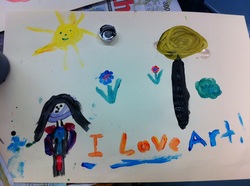 Painting this afternoon... we've been playing with colour the past several weeks, exploring the work of artist Keith Haring, and experimenting with primary paint colours to mix secondary and tertiary colours. This afternoon, inspired by some Art Images, we decided to apply our learning and paint a "real painting", either realistic or abstract. Wow! What a mess! We're in the thick of making marble mazes to apply our learning about difference forces causing movement. I often joke that I don't "do" science, and the tornado-like effect left in my room after today's class reminds me why that is! :-D
Of course, when I see the learning in action, I am also reminded of why I simply must "do science" in my classroom! (Please click on the first photo above for larger images and descriptive captions.) Every now and again I am reminded of my second flight lesson ever. The consummate professional, my instructor mechanically asked me at the end of my
It happened quite by accident, my revised listening habit on bike. Until recently, I had been listening to an album by Toots and the Maytals. I was usually able to make it to school by the end of the playlist. If I wasn't on the bridge over the
 Came across this great book last year, "Look What I Did with a Leaf!", and have been eager to try it out with my students ever since. This afternoon, I led my Grade Threes on a picture walk through the book. I could feel their excitement and inspiration, so off we went on a short (it was cold!) nature walk outside in the schoolyard to collect a few "treasures", then back to the classroom to get busy with some white glue and manilla tag. Below is a sample of what we came up with (click on the first image for larger versions of each photo). Some students worked with a partner, while others worked alone. All seemed to enjoy this activity, and I felt like it was a nice way for students to build awareness and appreciation of the natural world around them. (Also a great way to integrate the Naturalist Intelligence -- a-la Howard Gardiner's MIs -- and do a little pre-exposure for our "plants" unit, which will come up next spring!) Last night was my first actual commute home in the rain by bike. As of September, I have been riding to work twice a week, and I wondered how it would be as the weather got cooler and wetter. I was not worried about my gear, as I
This morning during "Read to Someone" (part of my Daily Five Literacy regime with my Grade 3 students), we started learning how to be good literacy coaches. Instead of simply telling our partners words they get stuck on while reading aloud, we now silently count to 3, then ask, "Do you want coaching or time?", and if the former, we pull out our "Reading Coach" sheet, and ask one or more questions on the list. Here's a copy... |
About Vera...After writing for several teacher and multiple birth publications, including ETFO's Voice Magazine, Multiple Moments, and the Bulletwin, Vera turned her written attention to prolific blogging for some years, including BiB, "Learn to Fly with Vera!" and SMARTbansho . Homeschooling 4 was her travel blog in Argentina. She now spends more time on her Instagram (@schalgzeug_usw) than her blog (pictures are worth a thousand words?!)
DISCLAIMER
The views expressed on this blog are the views of the author, and do not necessarily represent the perspectives of her family members or the position of her employer on the the issues she blogs about. These posts are intended to share resources, document family life, and encourage critical thought on a variety of subjects. They are not intended to cause harm to any individual or member of any group. By reading this blog and viewing this site, you agree to not hold Vera liable for any harm done by views expressed in this blog. Categories
All
Archives
August 2023
|
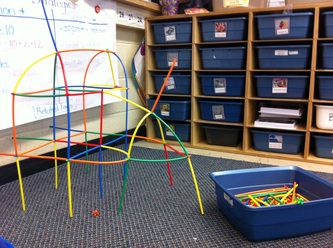


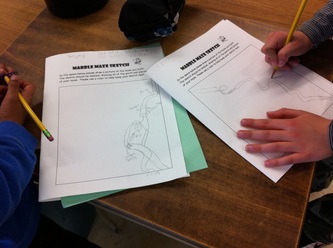
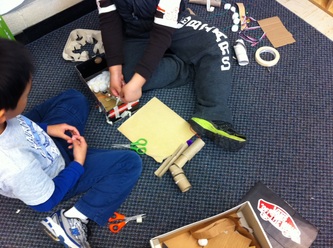
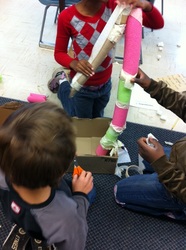



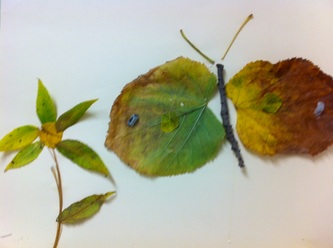
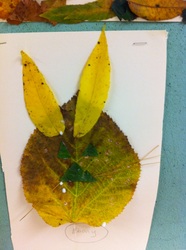
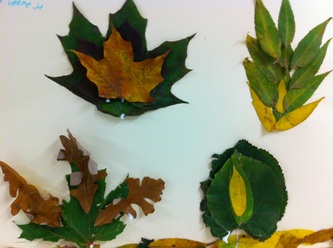
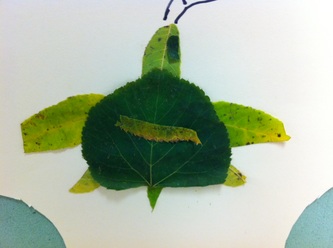

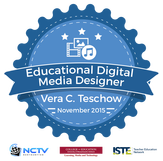
 RSS Feed
RSS Feed